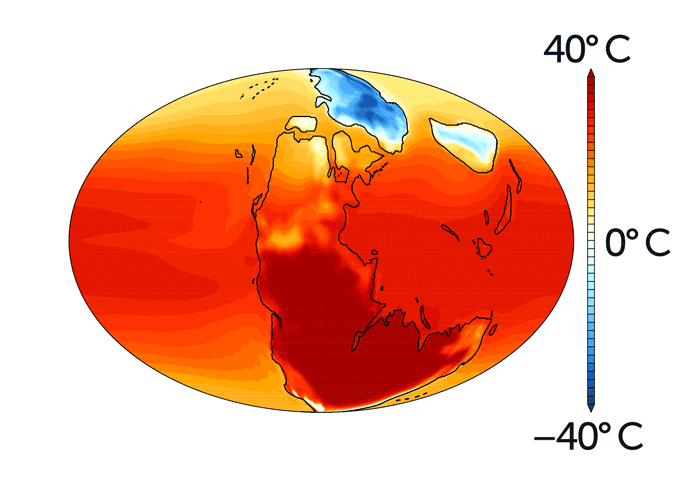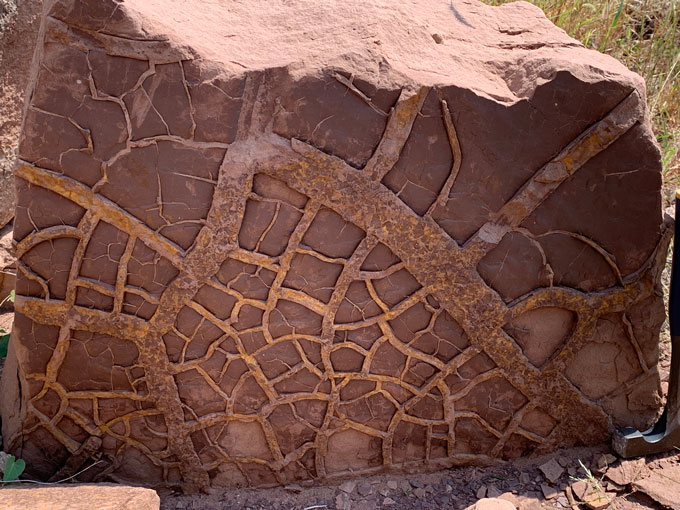A flurry of intense and wild swings in climate conditions may have fueled the largest mass extinction in Earth’s history. A recreation of how ancient sea surface temperatures, ocean and atmosphere circulation, and land masses interacted revealed an Earth plagued by nearly a decade of drought, fires and floods.
Researchers knew that a rise in global temperatures — caused by gas emissions from millions of years of huge volcanic eruptions in what is now Siberia — was the likely culprit behind a mass extinction roughly 252 million years ago.SN: 28.8.15). But it was the resulting catastrophic “mega El Niños” that hit the ecosystems, eventually wiping out about 90 percent of all ocean species and 75 percent of those on land, researchers report Sept. 13. Science.
“[The findings] “It really builds into an emerging picture that’s a little more nuanced of an extinction than we had previously appreciated,” says Erik Gulbranson, a sedimentary geochemist at Gustavus Adolphus College in Saint Peter, Minn., who was not involved. in the new study.
Researchers have wondered why the Great Dying that took place at the border of the Permian and Triassic periods was so brutal to life on Earth. “We have intense global warming, but we have other episodes of global warming in the geological record that don’t do anything as bad to ecosystems as this,” says paleontologist David Bond at the University of Hull in England.
While a sharp rise in sea surface temperature plus the resulting collapse in the warmer ocean’s ability to hold dissolved oxygen would have been terrible for ocean organisms, it was not clear what drove the extinction of life on earth or why these organisms cannot move to the coldest poles.
Part of the answer may lie in much shorter swings in paleoclimate.
“Species care about climate, but what they also really care about is weather,” says Alexander Farnsworth, a paleoclimate modeler at the University of Bristol in England. Such changes involve climate oscillations on the scale of years rather than hundreds of millennia or more. For example, today’s El Niño-Southern Oscillation—a periodic warming of the tropical Pacific Ocean that brings heat and dryness to North America, dampens the Atlantic hurricane season, and causes droughts and floods globally—lasts roughly a year.SN: 2/13/23).
Farnsworth, Bond and an international team of colleagues reconstructed what these climate patterns looked like more than 250 million years ago. The team calculated seawater temperatures using the ratios of different forms of oxygen in the fossilized teeth of conodonts, ancient animals such as fish. With this data plus new, updated computer simulations of Earth’s atmospheric and ocean circulation models, the team produced a more cohesive picture of the climate during the Great Dying. This was helped, Farnsworth says, by a newer and more accurate understanding of what continents and ocean basins looked like at the end of the Permian, which affects global atmospheric and oceanic circulation.

When carbon dioxide levels initially doubled from about 410 to 860 parts per million and global temperatures rose, periods of El Niño-like warming originating mainly from the giant Permian ocean, Panthalassia, grew more intense, the team found. (In comparison, current CO₂ levels are hovering around 422 ppm.) Over time, the oscillations also lengthened, sometimes stretching for nearly a decade.
The effects of these mega El Niños would have been too rapid to sustain terrestrial organisms. As the carbon dioxide-sucking forests matured and died, fewer greenhouse gases were pulled from the atmosphere, Farnsworth says, creating a self-perpetuating cycle as volcanoes continued to pump out the warming gases.
“You get more warming, more extinctions of vegetation, stronger El Niños, higher temperatures globally, higher extremes of weather again, leading to more deaths,” says Farnsworth. Large areas of the globe would have succumbed to searing heat, drought and fire in dramatic floods.

The heat eventually invaded higher latitudes, leaving few places to escape an increasingly hostile atmosphere.
“It got really hot everywhere, and that’s why [species] it just couldn’t migrate north and south,” says Bond.
In the end, many species simply could not adapt to this climatic roller coaster.
Now that the findings paint a higher-resolution picture of how warming accelerated a mass extinction at the end of the Permian, there may be a way to see these rapid climate swings in the fossil record itself. Gulbranson points out that annual records preserved in fossil cave stalactites and tree rings may show evidence of mega El Niños.
“We need to trace these signals in the fossil record. We should see them in organisms that lived and went extinct,” he says.
Next, Bond is curious about what innate physical and ecosystem traits made certain periods in Earth’s history more resilient to the ravages of climate chaos and others more vulnerable to mass extinction.
#Mega #Niños #triggered #worlds #worst #mass #extinction
Image Source : www.sciencenews.org